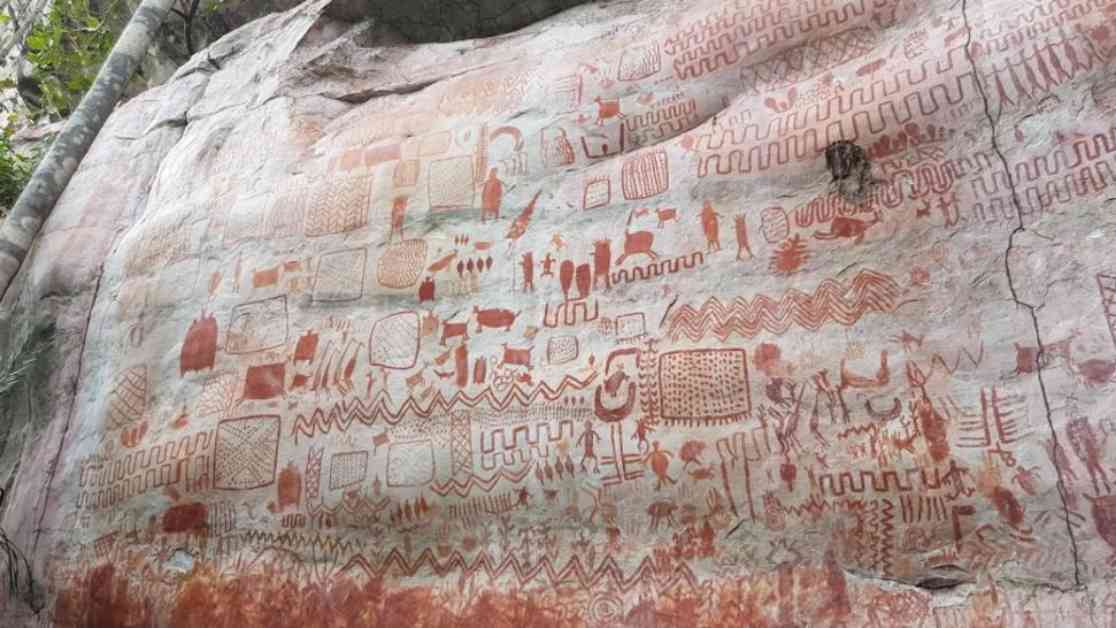A collection of ancient rock art found in the western Amazon offers a glimpse into the relationship between early humans and animals in the region. The paintings, located on cliffs in Colombia, depict over 3,000 drawings of humans and various animals, including fish, reptiles, and mammals. Some of the artwork even shows animals and humans merging, reflecting the rich mythology of the indigenous Amazonians.
While the exact age of the rock art has not been determined, researchers estimate it dates back to around 10500 B.C. This discovery provides the earliest evidence of human presence in western Amazonia, dating back 12,500 years. The paintings showcase a diverse range of animals, such as deer, birds, peccary, lizards, turtles, and tapirs. Interestingly, the proportion of animal drawings does not align with the proportion of butchered animal bones found in nearby excavations, suggesting that the indigenous people did not only depict animals they consumed.
The rock art features scenes of fishing, hunting, and unknown animals, offering valuable insights into how the early settlers perceived their relationship with animals. The complexity of these relationships is evident in the artwork, showcasing animals as both a food source and revered beings with supernatural connections. The extensive collection of rock art includes panels like El Más Largo and Principal, containing a mix of figurative drawings, with half depicting animals.
Despite the researchers’ efforts to catalog and analyze the rock art, the exact meaning and significance of the images remain unclear. However, the artwork provides a deeper understanding of the myths and rituals of the indigenous communities, shedding light on taboo practices, power dynamics, and negotiations with the supernatural world.
This discovery highlights the importance of preserving and studying ancient rock art as a window into the past. The intricate details and symbolism found in these paintings offer valuable insights into the beliefs and practices of early inhabitants of the Amazon region. Further research and analysis of this rock art could reveal even more about the cultural and spiritual significance of these ancient drawings, providing a greater understanding of the early human-animal connections in the Amazon.












